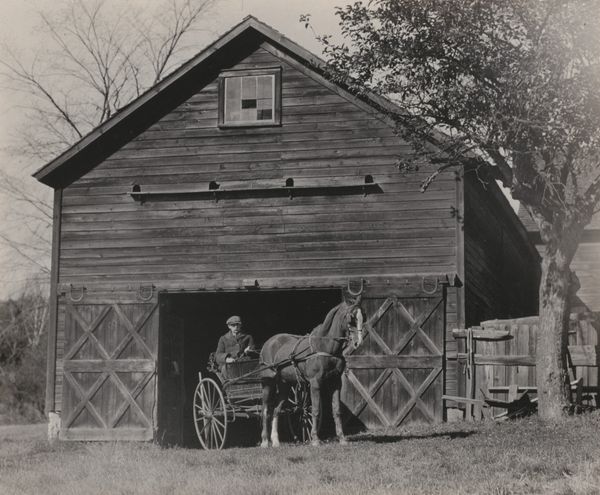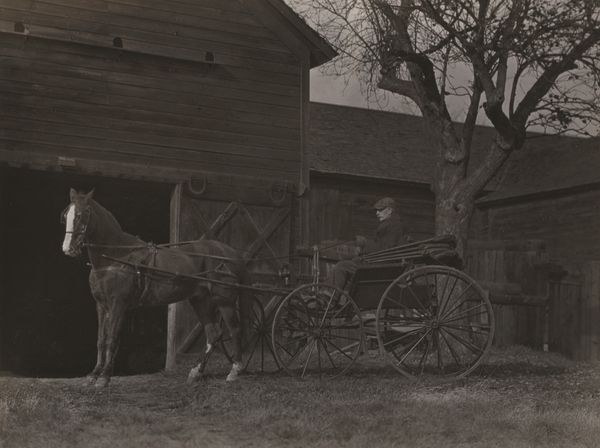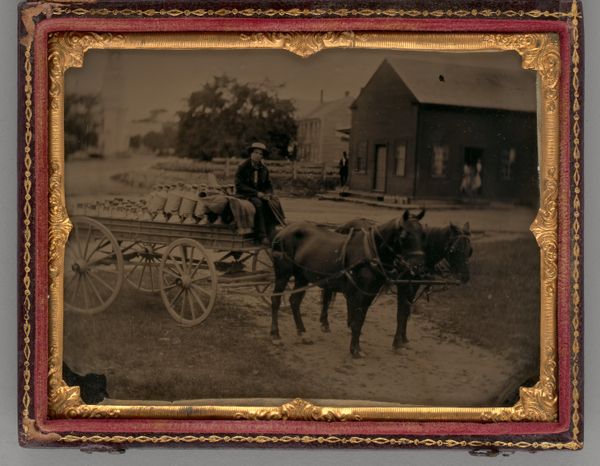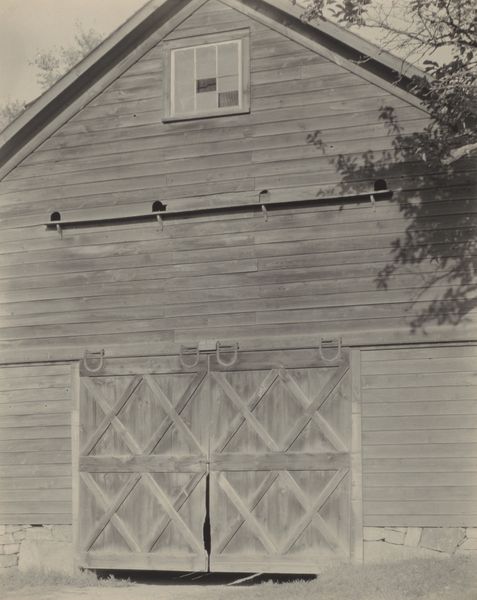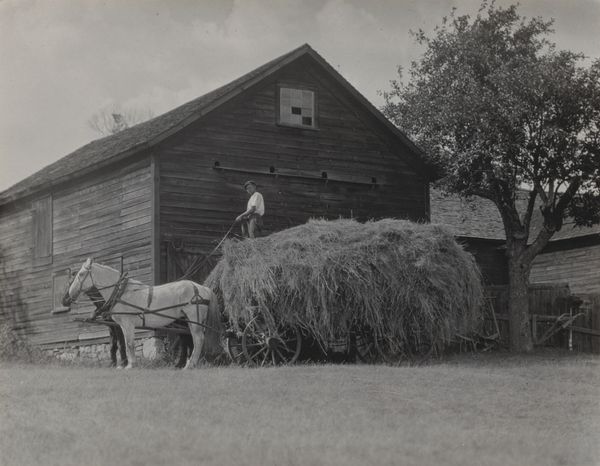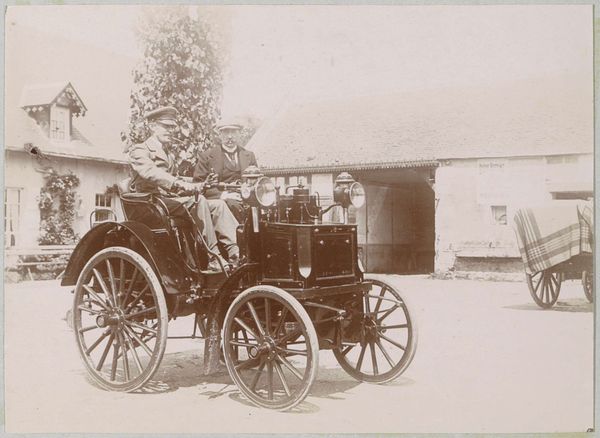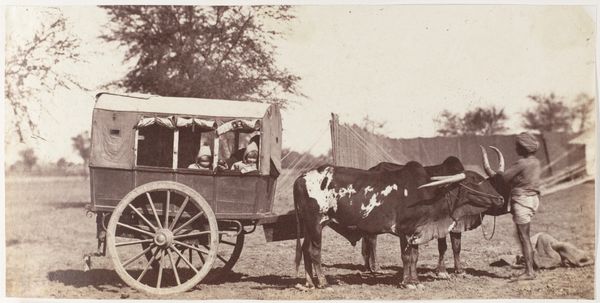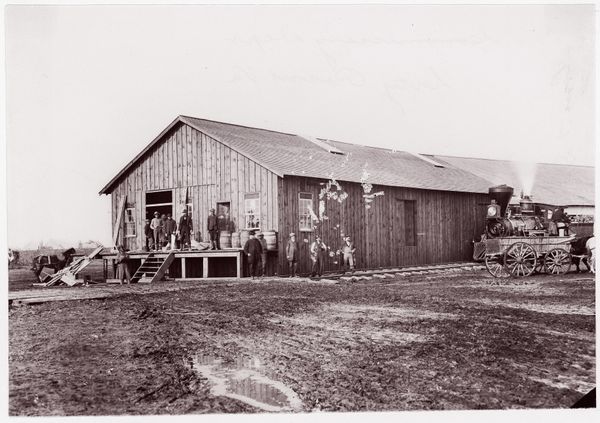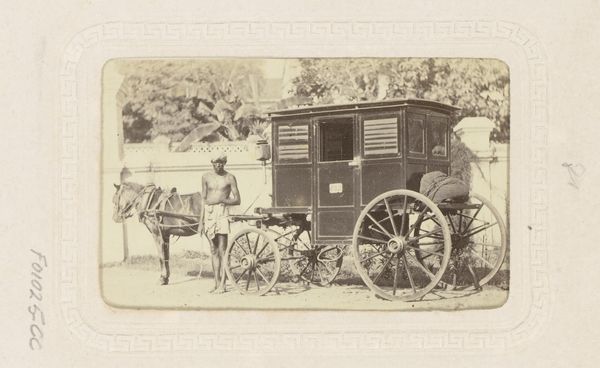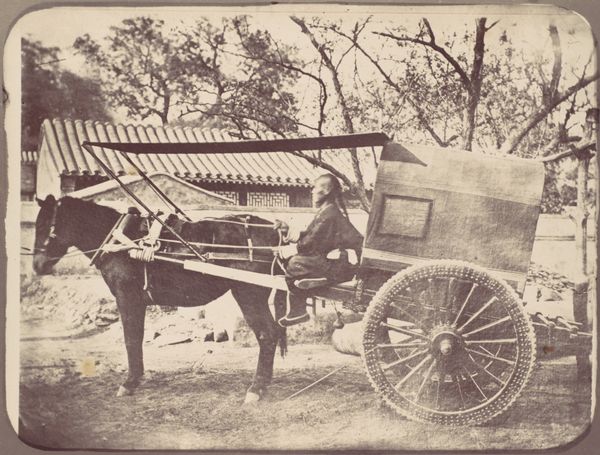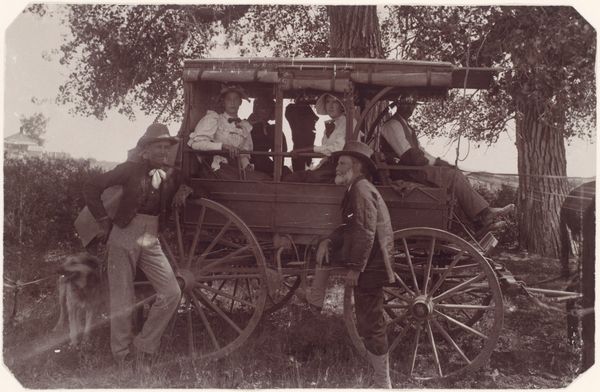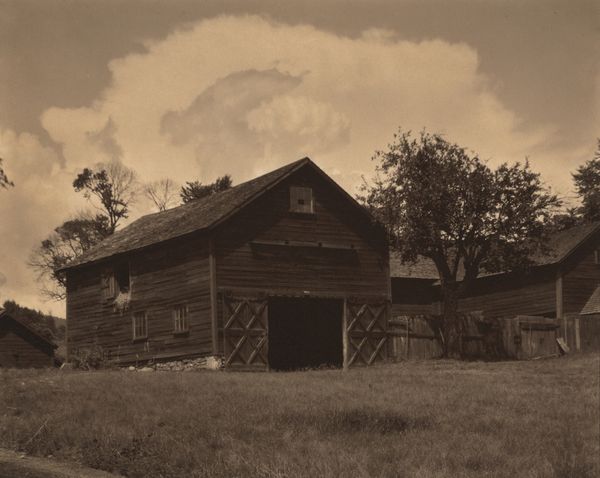
photography, gelatin-silver-print
#
landscape
#
photography
#
gelatin-silver-print
#
modernism
#
realism
Dimensions: sheet (trimmed to image): 19.1 × 24 cm (7 1/2 × 9 7/16 in.) mount: 57.1 × 46.3 cm (22 1/2 × 18 1/4 in.)
Copyright: National Gallery of Art: CC0 1.0
Curator: The stillness in this piece is almost deafening. It's a gelatin silver print from 1922, titled "Barn and Carriage," by Alfred Stieglitz. Editor: Yes, a quietness that speaks volumes about obsolescence and abandonment. There is something ghostly in the muted tones. A relic. Curator: Ghostly indeed. For Stieglitz, I think it represented something deeper. Consider the carriage as a symbol of a past era, a genteel lifestyle fading away with the rise of the industrial age. The barn doors slightly open as if time itself has stopped. Editor: I like how the carriage is centrally located but shrouded in shadow. We can read that a few ways, of course. Class implications, yes, but it's impossible not to think of what those structures meant during this period when reflecting on agrarianism and the plight of rural populations amid economic shifts. Curator: The open barn door itself has so many associations. From the archetypal ideas of transition and opportunity, or even loss of innocence in the garden. To the symbol of the "open door policy" that welcomed immigration in the United States, so resonant during this period of increased urbanization and xenophobia. Editor: And even how ideas of mobility and freedom were impacted during the Great Migration... These agricultural structures are always coded sites within an evolving landscape. Even in its formal choices, I wonder if we can unpack ideas about authenticity. Curator: Stieglitz’s work always balances precision and poetry. His eye frames a commonplace subject in a way that asks bigger questions. This isn’t just a photograph; it's a visual poem about American identity and the relentless march of time. Editor: A frozen frame in the endless churn of American change. So much history contained within these shades of gray, inviting us to question whose stories were centralized in Stieglitz’s artmaking. Curator: I leave with questions of cultural inheritance and the visual legacy around ideas of progress and obsolescence. Editor: Agreed. This makes me question our nostalgic and maybe limited historical narratives about an era so romanticized even within its struggles.
Comments
No comments
Be the first to comment and join the conversation on the ultimate creative platform.
